Abstract
Sera taken from persons of various ages in 1951 and collected from adults yearly from 1943 to 1951, inclusive, were tested by the haemagglutination-inhibition method with influenza viruses selected to represent the subgroups of each antigenic type. These were influenza A—WS (1933) and PR8 (1934); influenza A-prime—FM1 (1947) and FW-1-50 (1950); influenza B—Lee (1940) and IB1 (1950); influenza C—1233 (1947). The sera tested with influenza A and B viruses were treated with cholera filtrate to remove non-specific inhibitor. Since influenza C virus was not affected by the non-specific substance, the sera tested against this agent were not so treated.
Children's sera showed high antibody level, attained at an early age, for FM1 and FW-1-50 viruses, and essentially no antibody for WS or PR8. By contrast, adult sera revealed high antibody content for PR8 and moderate titres for WS and the A-prime viruses. In adult sera, antibody against the PR8 virus increased significantly in 1944, after the 1943-4 epidemic, and remained at a relatively constant level for the eight succeeding years. The antibody pattern for WS was similar to that for PR8, but the values for its titres were only half as great. Antibody against the A-prime strains rose steadily from inconsequential levels in 1943 to high mean titres in 1951. These findings were consistent with virus isolation studies which suggested that the A-prime viruses, such as FM1, were introduced about 1946 and have been continuously prevalent since that time, while the WS and PR8 agents have been recovered only occasionally in recent years. Sera tested with Lee and IB1 viruses showed essentially identical titres. Antibody to these strains was low in the sera of children, indicating that there had been little previous exposure to the B agents. Adult sera showed marked elevation in titre between 1944 and 1946, and the titres have remained at a high level since that time. The increase in 1946 followed the influenza B outbreak of 1945-6; the increase in the previous year occurred in spite of the fact that there was no epidemic. Children developed significant antibody to influenza C in early life, and high antibody levels were observed in adult sera collected over the nine-year period. These observations indicate that the virus was widespread in the population and was prevalent before 1943.
Full text
PDF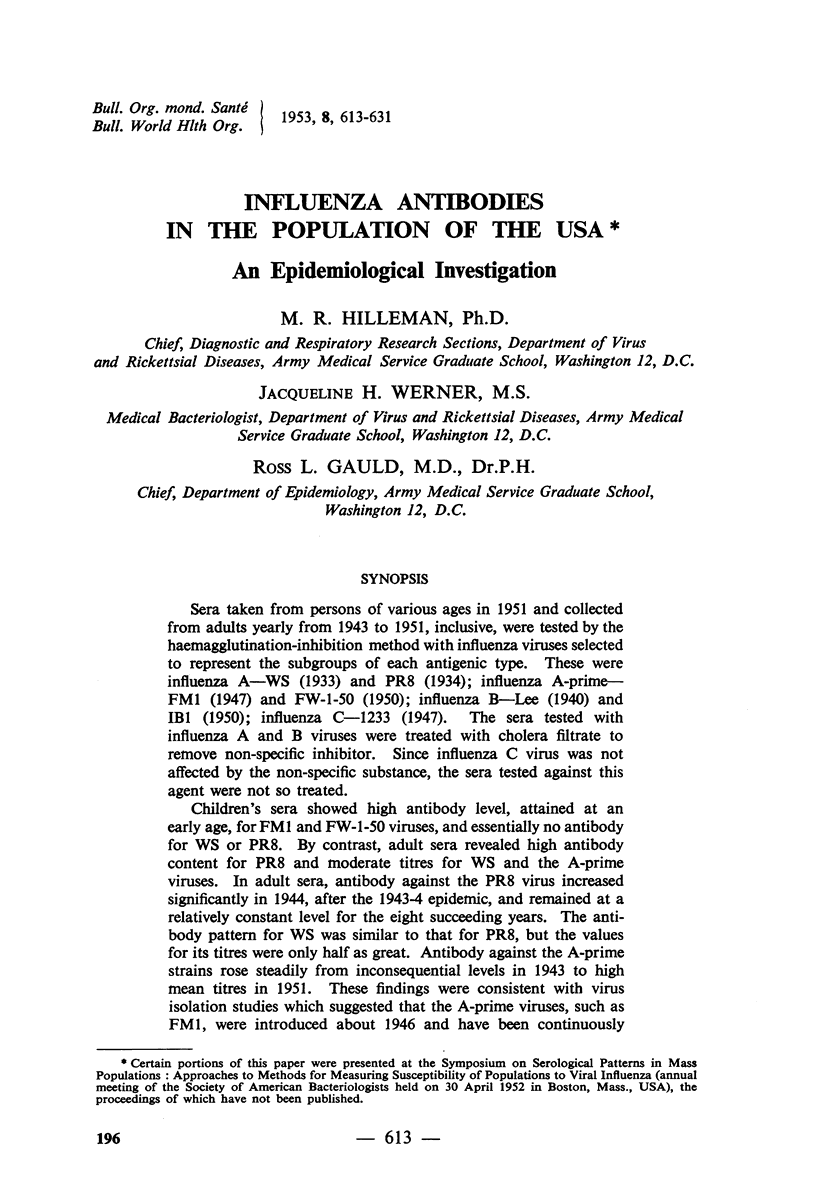
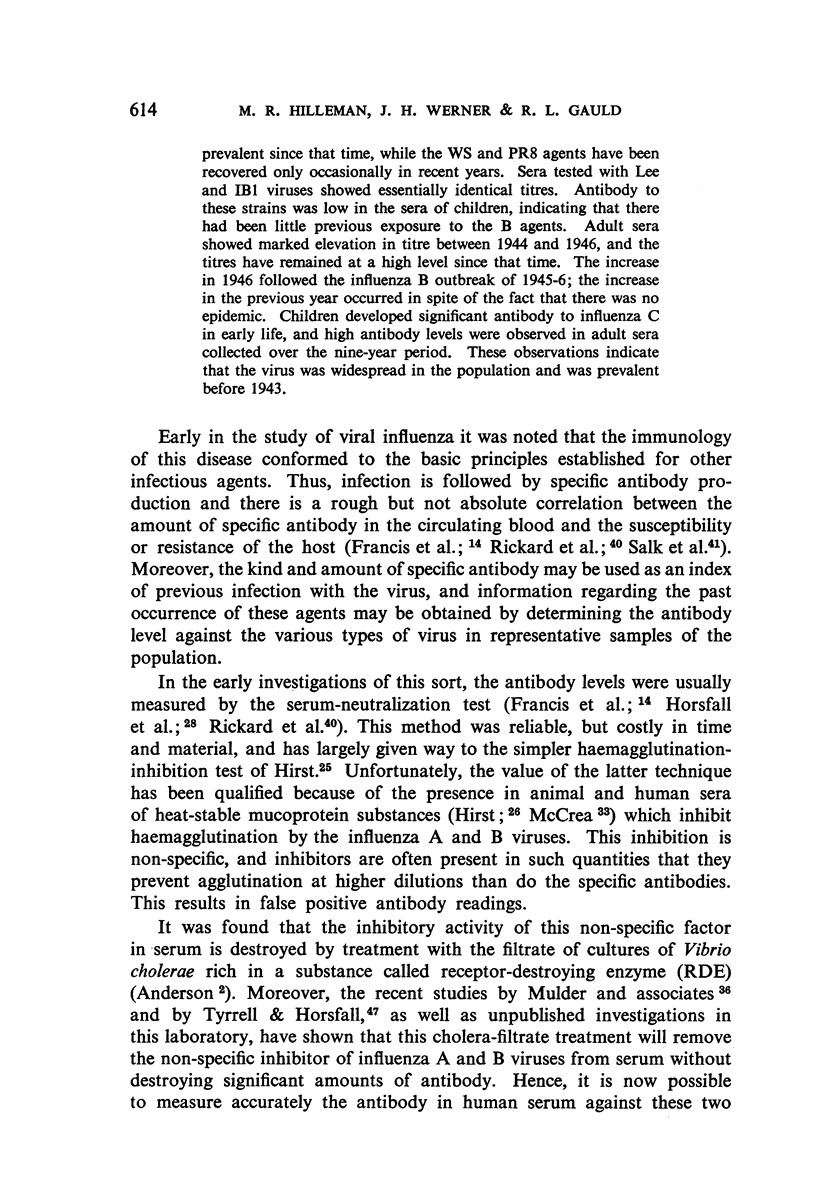
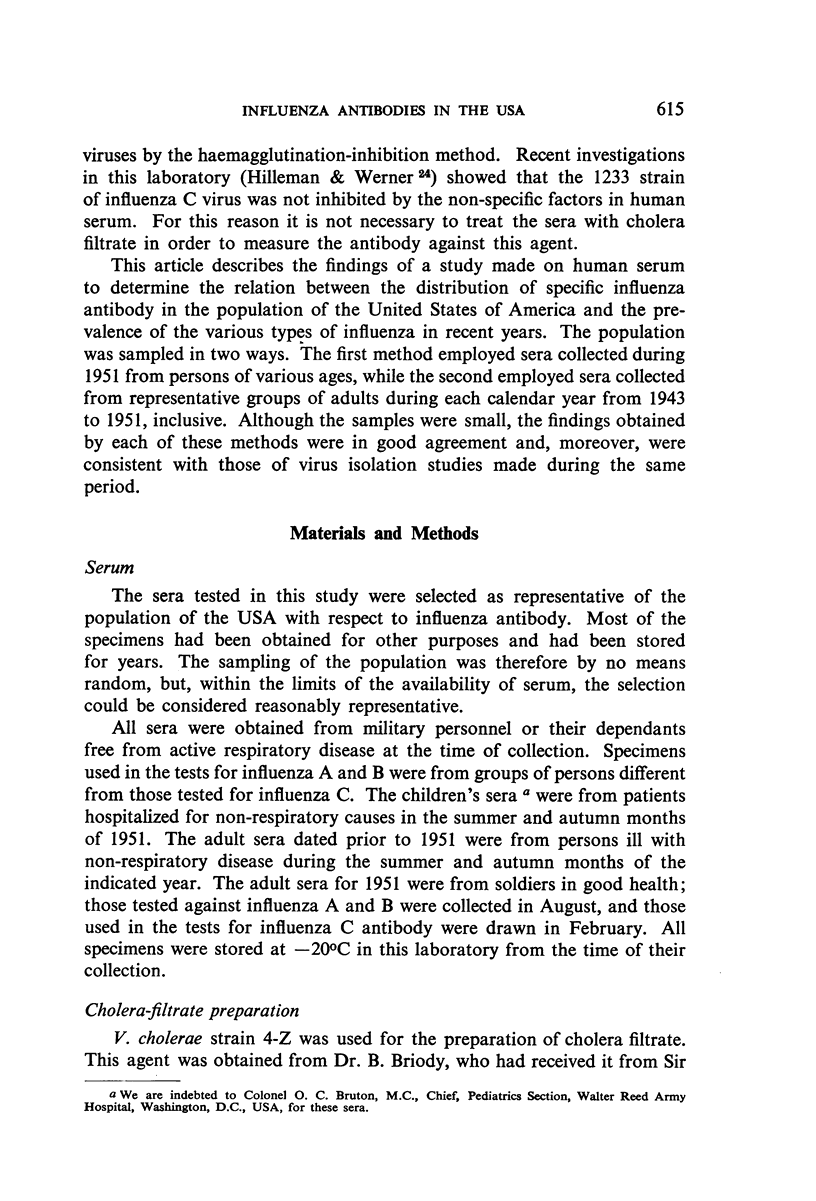
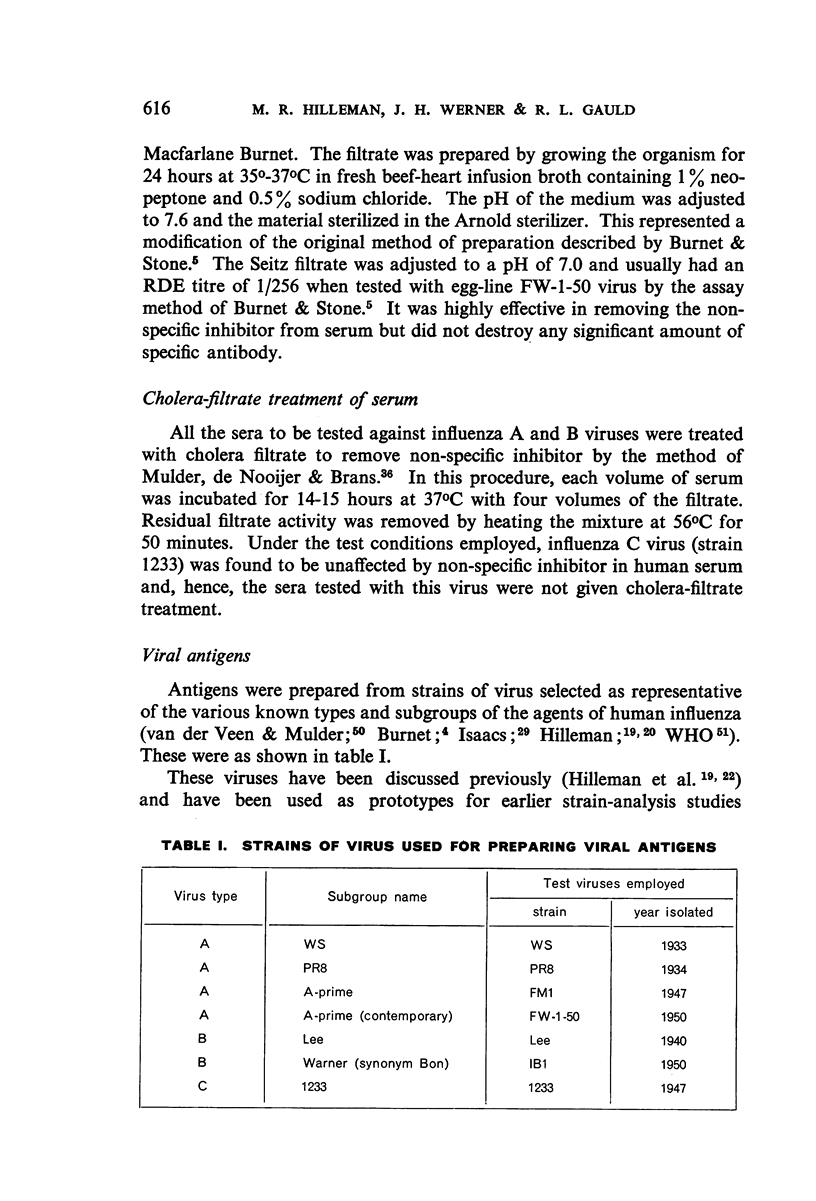
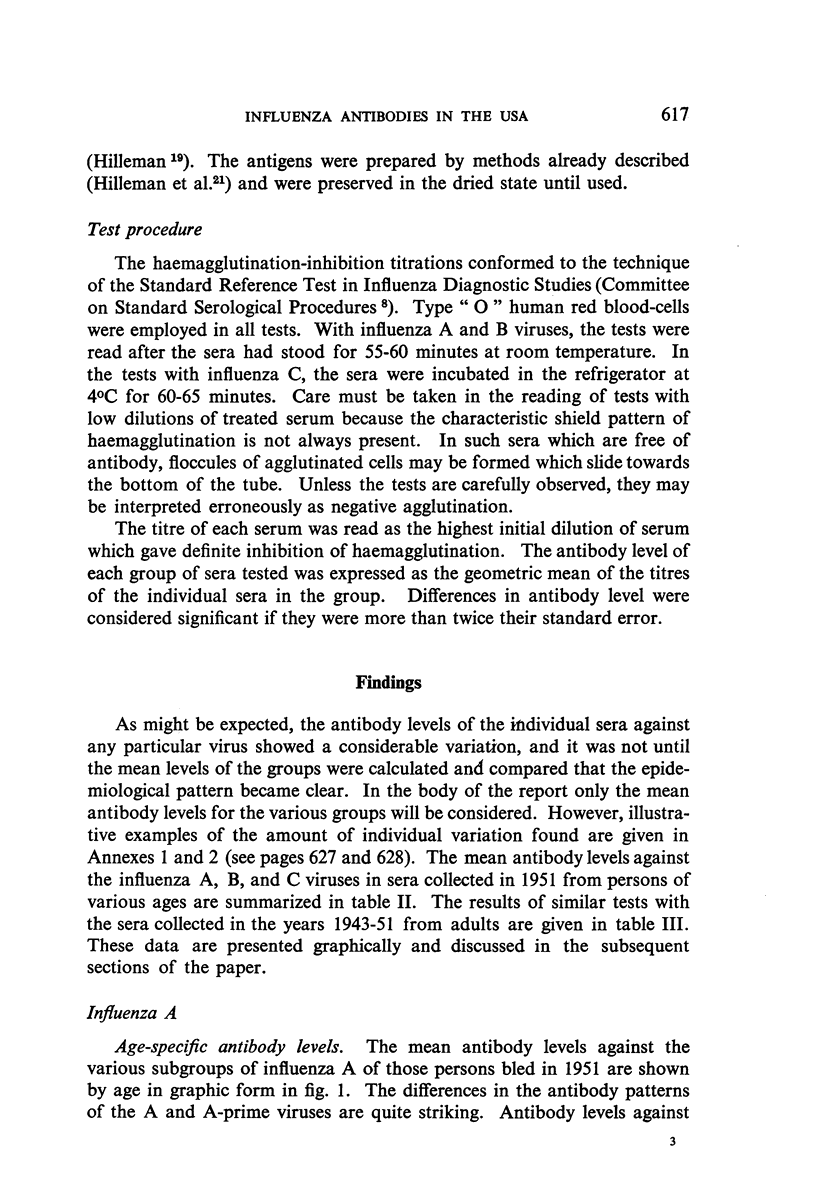
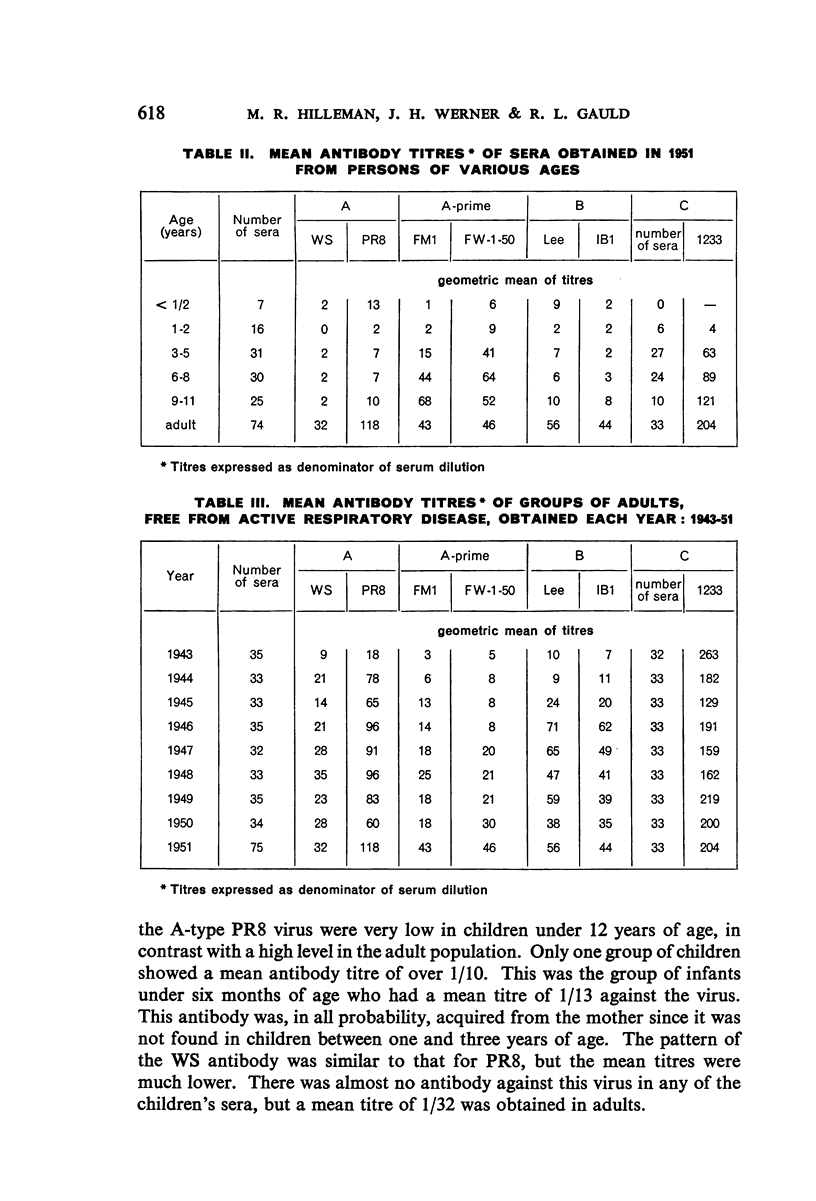
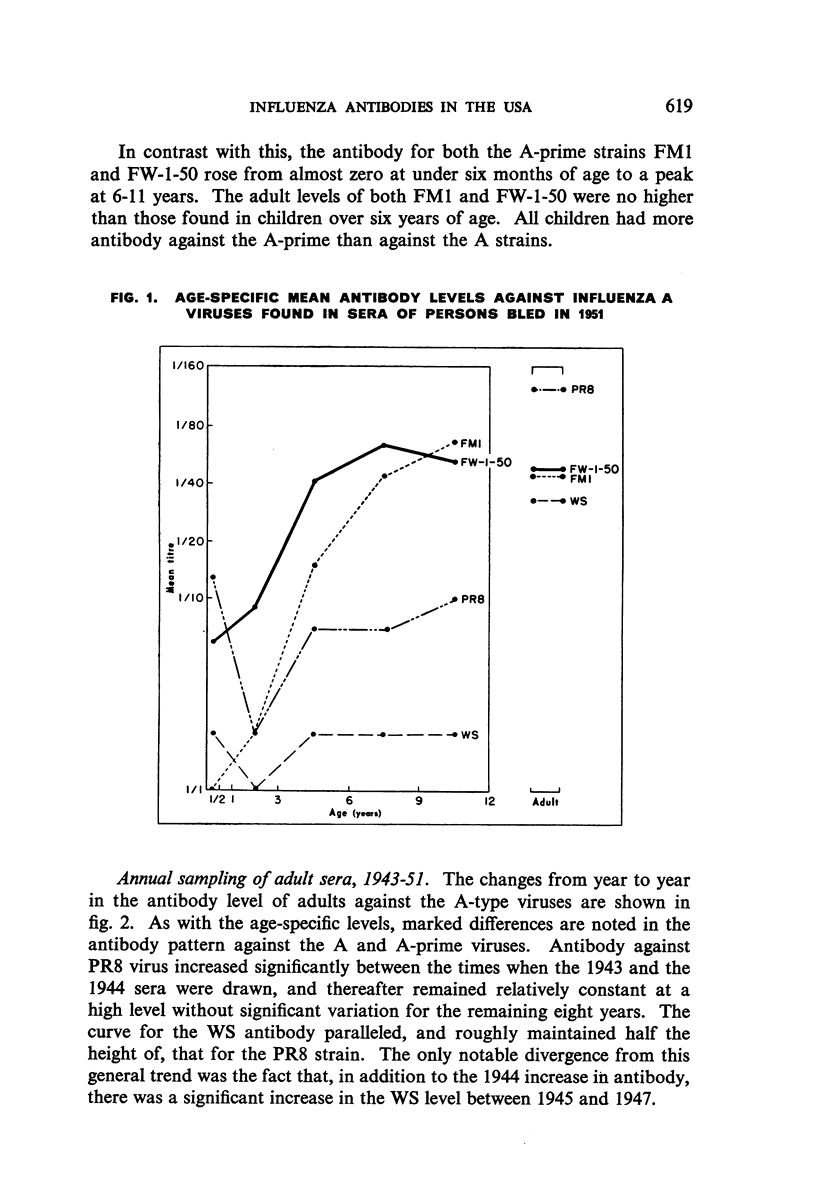
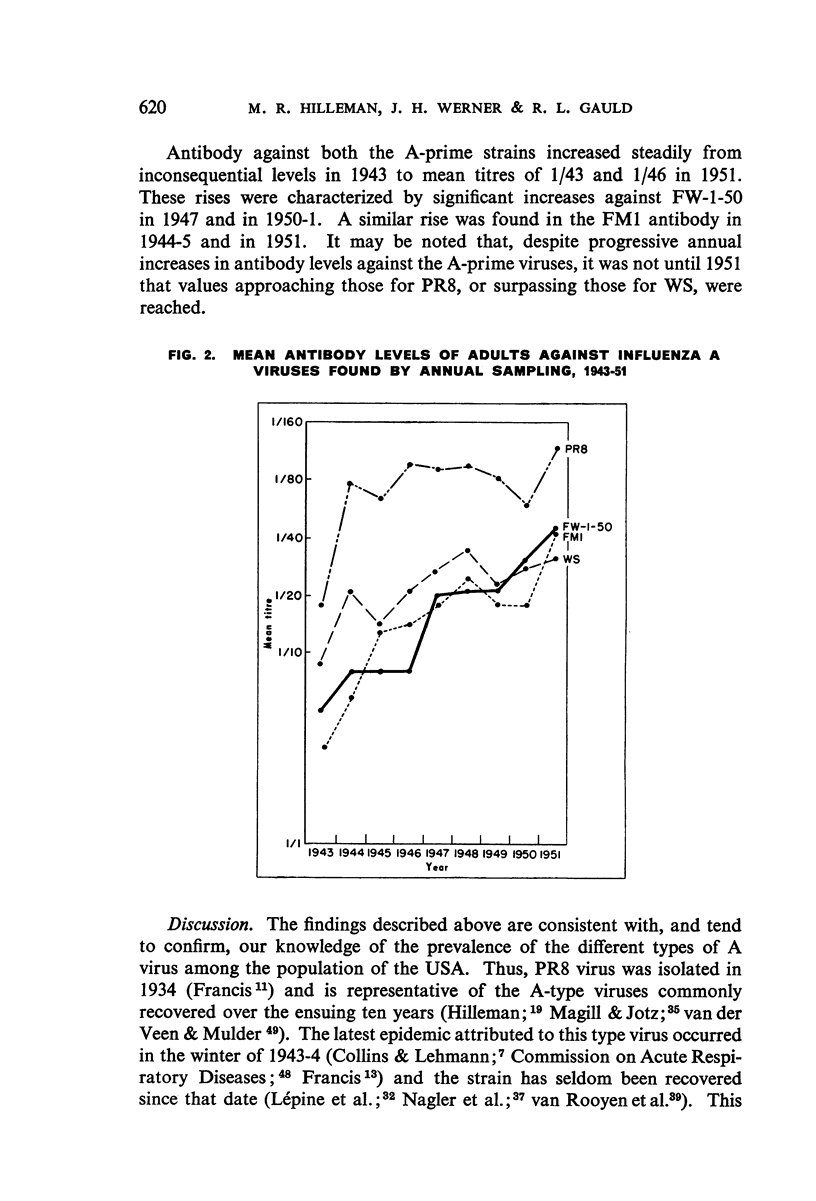
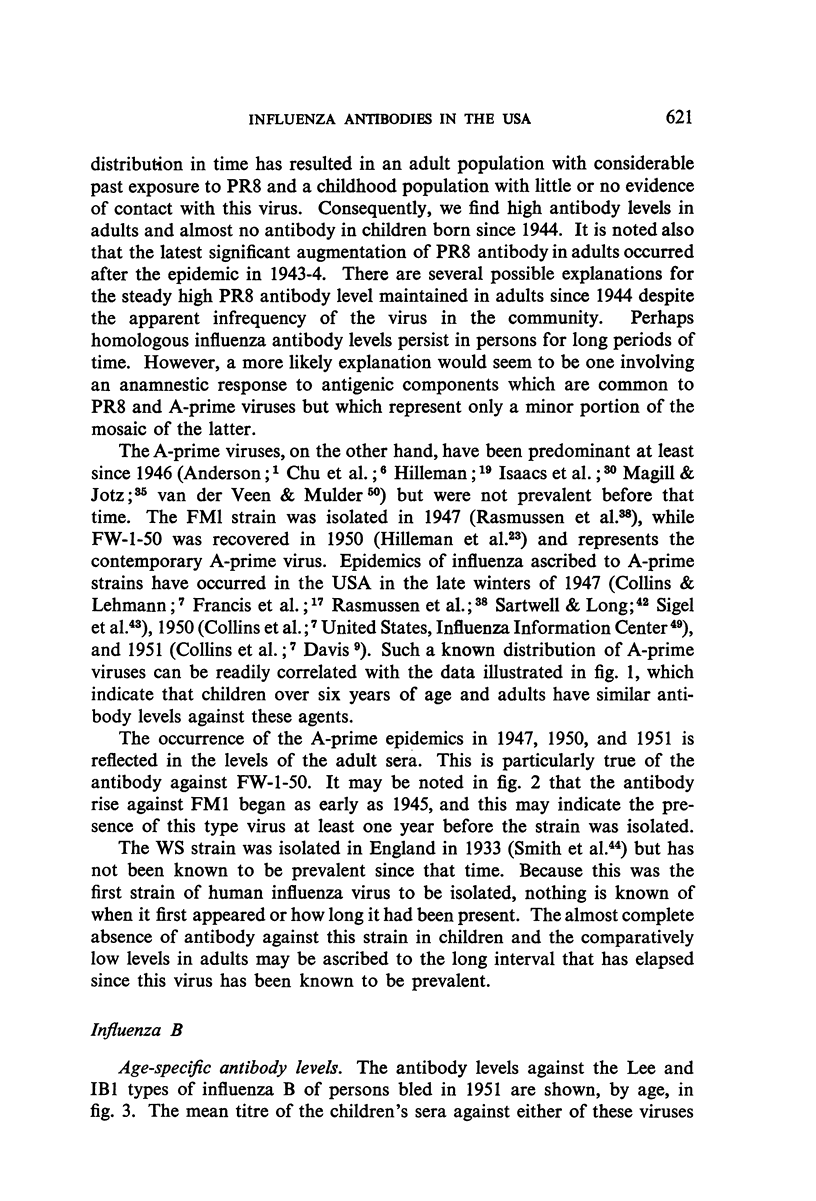
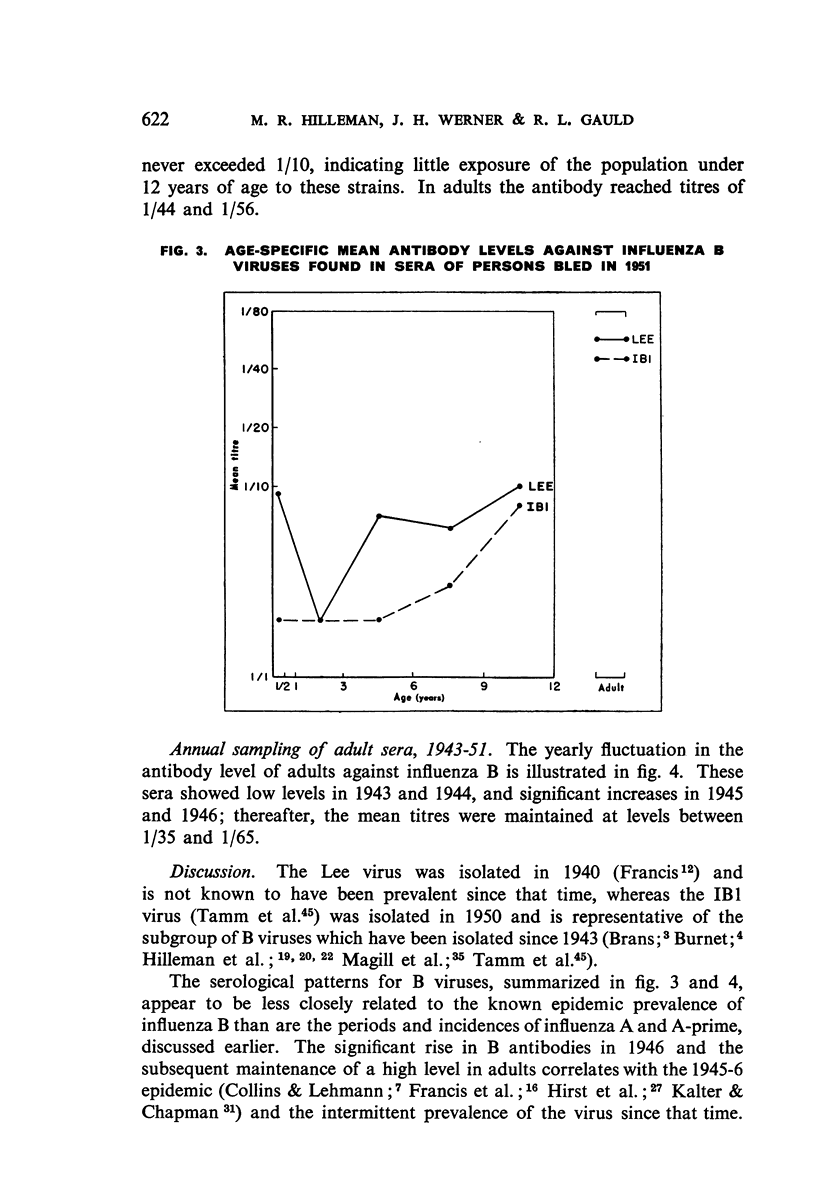
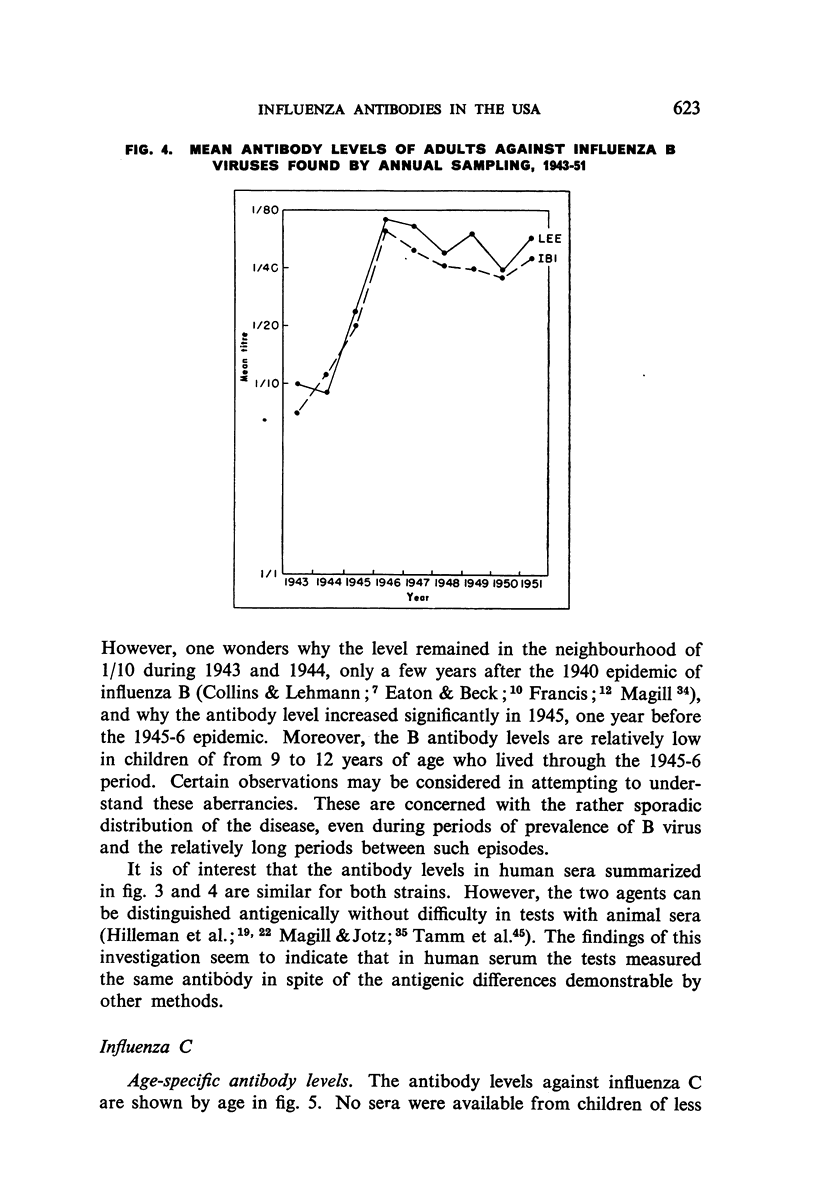
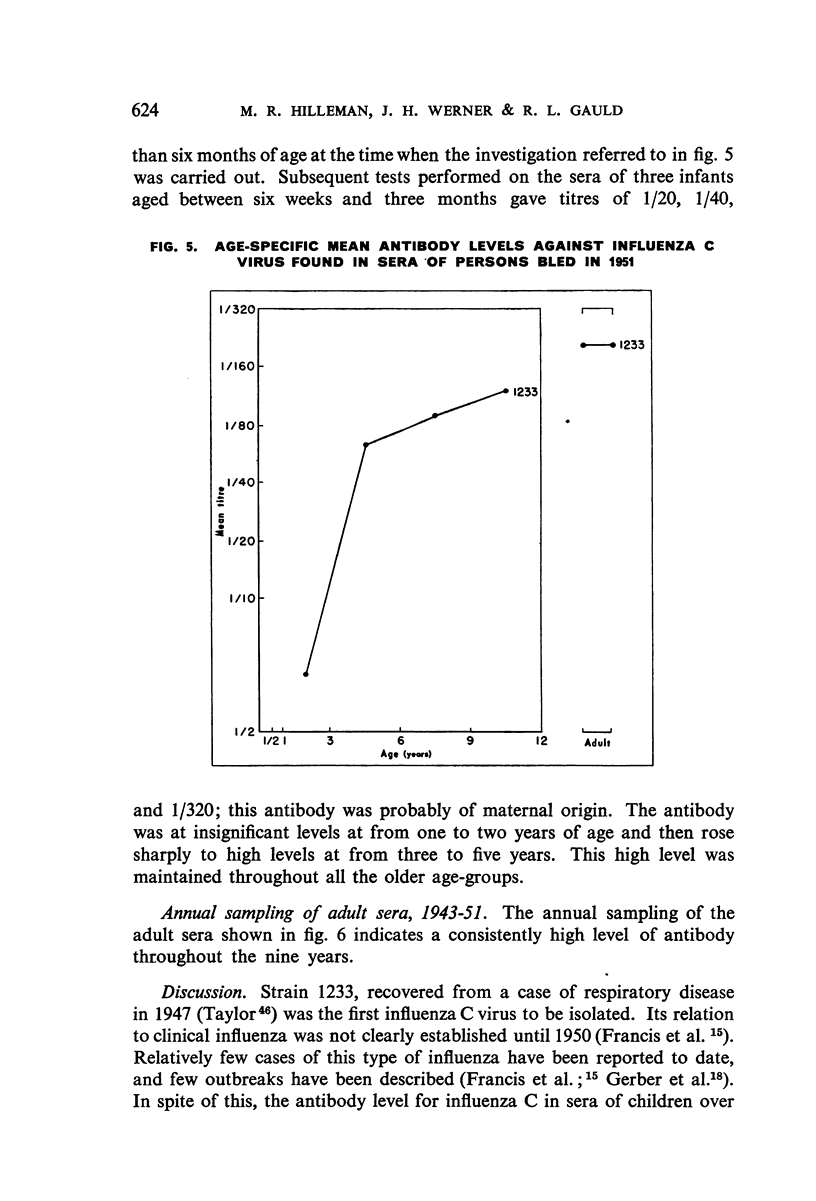

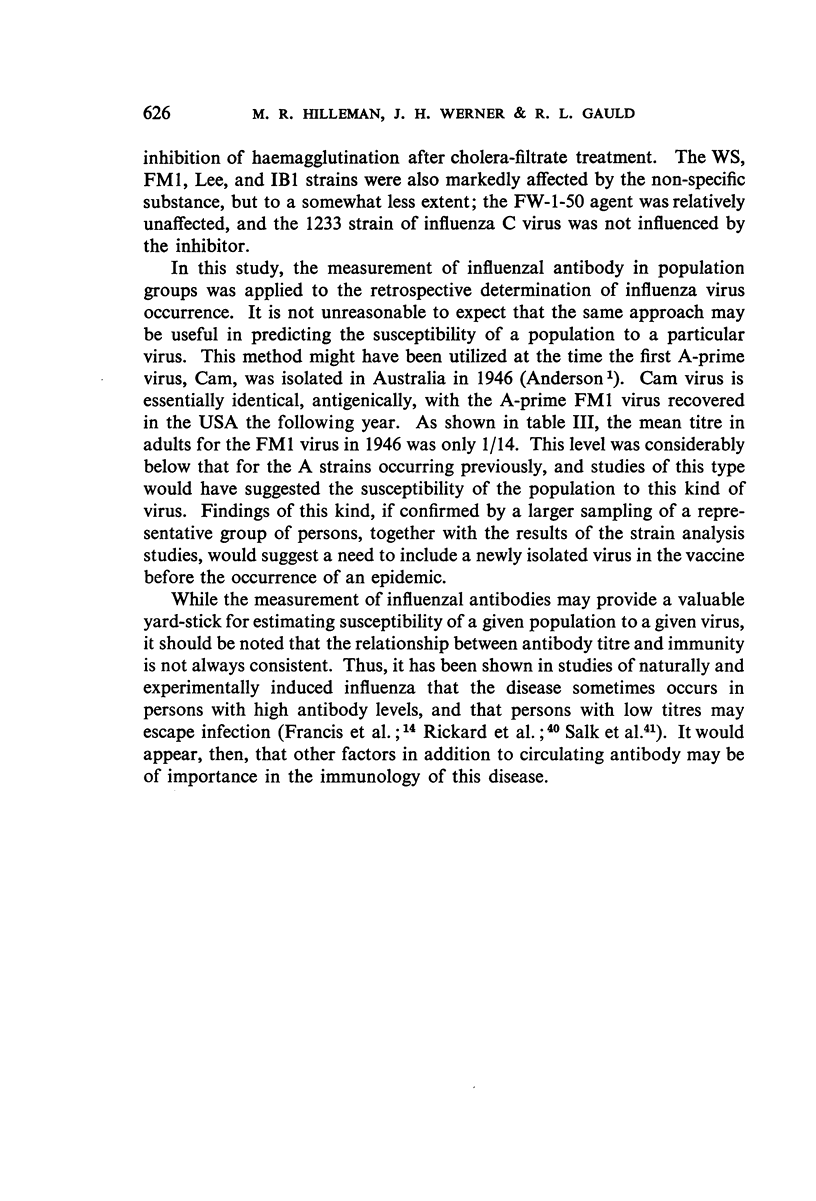
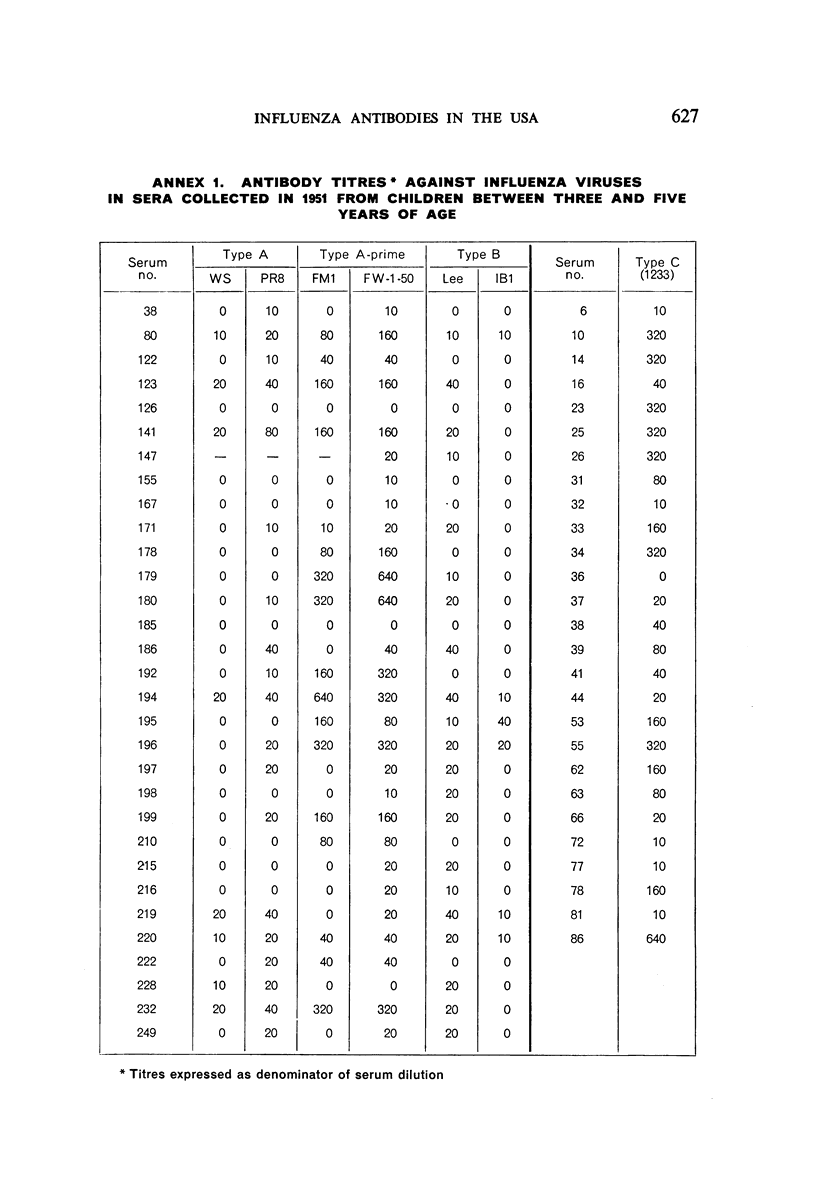
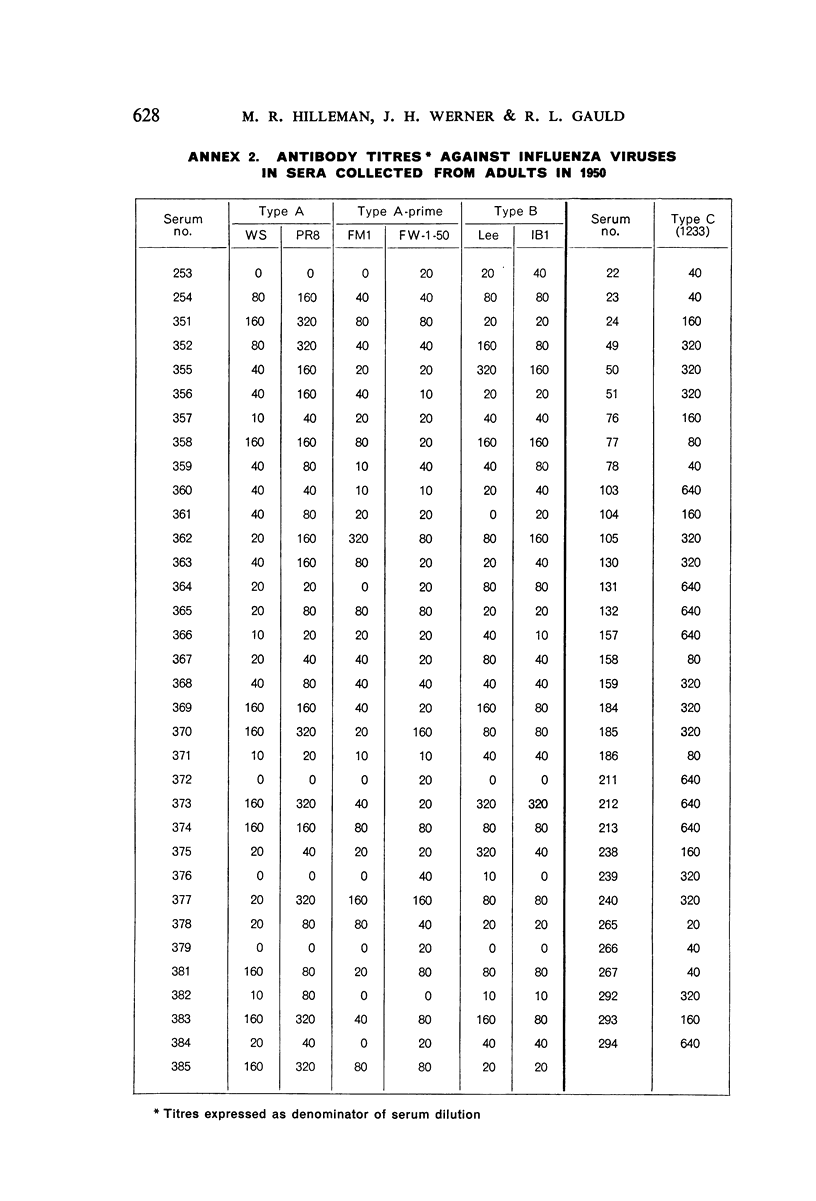
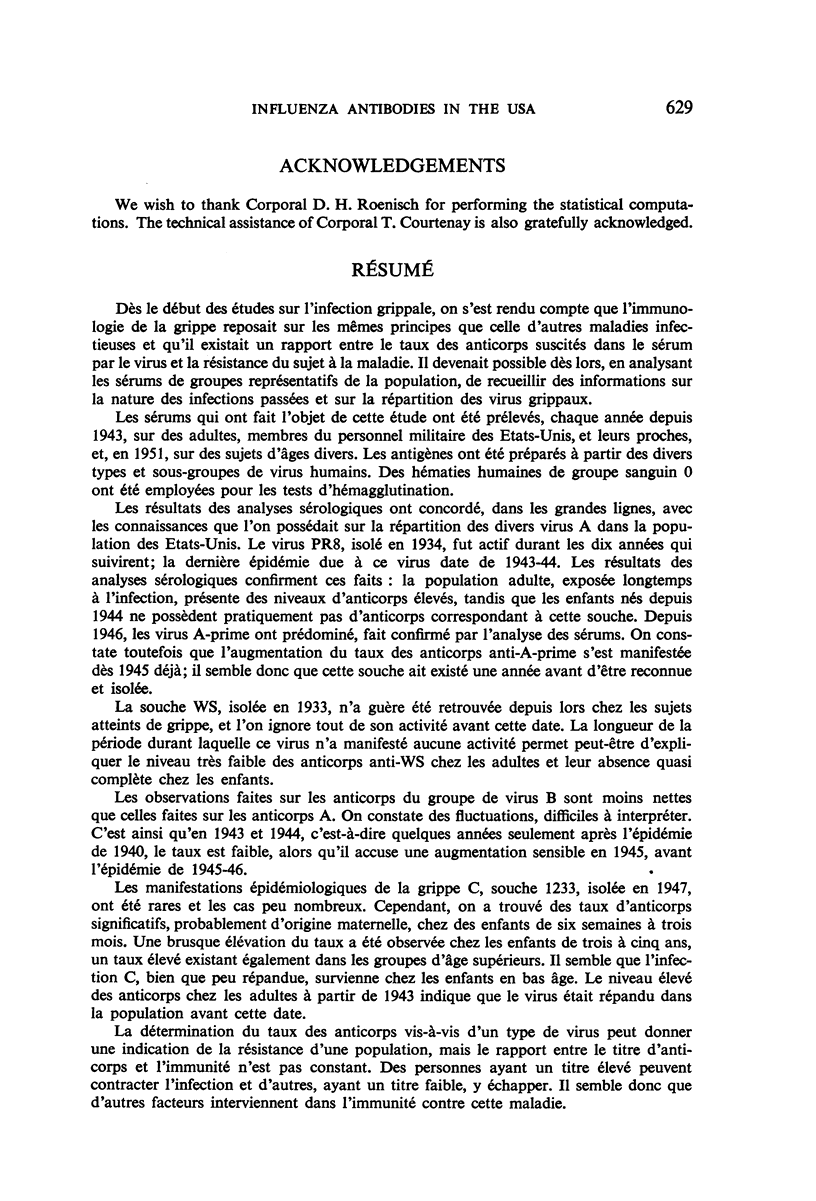
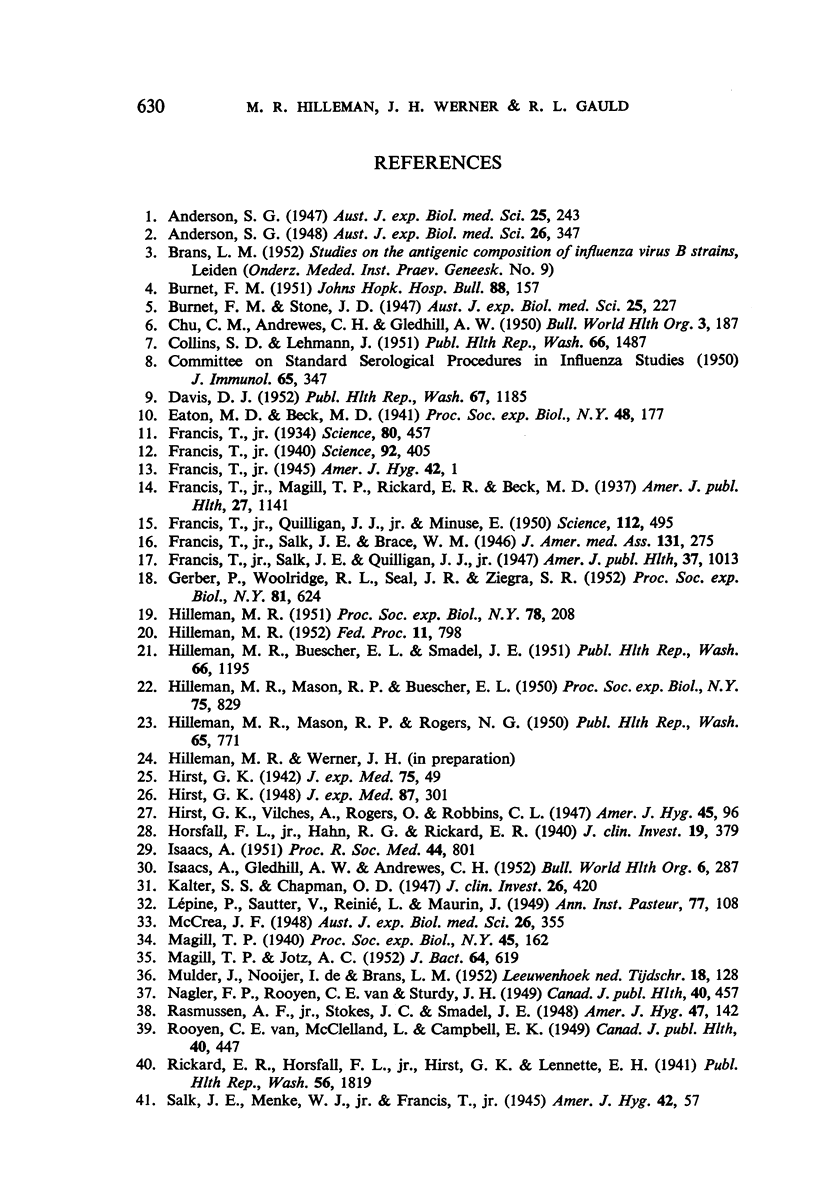

Selected References
These references are in PubMed. This may not be the complete list of references from this article.
- CHU C. M., ANDREWES C. H., GLEDHILL A. W. Influenza in 1948-1949. Bull World Health Organ. 1950;3(2):187–214. [PMC free article] [PubMed] [Google Scholar]
- COLLINS S. D., LEHMANN J. Trends and epidemics of influenza and pneumonia: 1918-1951. Public Health Rep. 1951 Nov 16;66(46):1487–1516. [PMC free article] [PubMed] [Google Scholar]
- FRANCIS T., Jr, QUILLIGAN J. J., Jr, MINUSE E. Identification of another epidemic respiratory disease. Science. 1950 Oct 27;112(2913):495–497. doi: 10.1126/science.112.2913.495. [DOI] [PubMed] [Google Scholar]
- Francis T., Jr A NEW TYPE OF VIRUS FROM EPIDEMIC INFLUENZA. Science. 1940 Nov 1;92(2392):405–408. doi: 10.1126/science.92.2392.405. [DOI] [PubMed] [Google Scholar]
- Francis T., Jr TRANSMISSION OF INFLUENZA BY A FILTERABLE VIRUS. Science. 1934 Nov 16;80(2081):457–459. doi: 10.1126/science.80.2081.457-a. [DOI] [PubMed] [Google Scholar]
- Francis T., Magill T. P., Rickard E. R., Beck M. D. Etiological and Serological Studies in Epidemic Influenza. Am J Public Health Nations Health. 1937 Nov;27(11):1141–1160. doi: 10.2105/ajph.27.11.1141. [DOI] [PMC free article] [PubMed] [Google Scholar]
- Francis T., Salk J. E., Quilligan J. J. Experience with Vaccination Against Influenza in the Spring of 1947: A Preliminary Report. Am J Public Health Nations Health. 1947 Aug;37(8):1013–1016. doi: 10.2105/ajph.37.8.1013. [DOI] [PMC free article] [PubMed] [Google Scholar]
- HILLEMAN M. R. A pattern of antigen variation. Fed Proc. 1952 Sep;11(3):798–803. [PubMed] [Google Scholar]
- HILLEMAN M. R., BUESCHER E. L., SMADEL J. E. Preparation of dried antigen and antiserum for the agglutination-inhibition test for virus influenza. Public Health Rep. 1951 Sep 21;66(38):1195–1203. [PMC free article] [PubMed] [Google Scholar]
- HILLEMAN M. R., MASON R. P., BUESCHER E. L. Antigenic pattern of strains of influenza A and B. Proc Soc Exp Biol Med. 1950 Dec;75(3):829–835. doi: 10.3181/00379727-75-18361. [DOI] [PubMed] [Google Scholar]
- HILLEMAN M. R., MASON R. P., ROGERS N. G. Laboratory studies on the 1950 outbreak of influenza. Public Health Rep. 1950 Jun 16;65(24):771–777. [PMC free article] [PubMed] [Google Scholar]
- HILLEMAN M. R. System for measuring and designating antigenic components of influenza viruses with analyses of recently isolated strains. Proc Soc Exp Biol Med. 1951 Oct;78(1):208–215. doi: 10.3181/00379727-78-19023. [DOI] [PubMed] [Google Scholar]
- HIRST G. K. The nature of the virus receptors of red cells; evidence on the chemical nature of the virus receptors of red cells and of the existence of a closely analogous substance in normal serum. J Exp Med. 1948 Apr 1;87(4):301–314. doi: 10.1084/jem.87.4.301. [DOI] [PMC free article] [PubMed] [Google Scholar]
- Hirst G. K. THE QUANTITATIVE DETERMINATION OF INFLUENZA VIRUS AND ANTIBODIES BY MEANS OF RED CELL AGGLUTINATION. J Exp Med. 1942 Jan 1;75(1):49–64. doi: 10.1084/jem.75.1.49. [DOI] [PMC free article] [PubMed] [Google Scholar]
- Horsfall F. L., Hahn R. G., Rickard E. R. FOUR RECENT INFLUENZA EPIDEMICS: AN EXPERIMENTAL STUDY. J Clin Invest. 1940 Mar;19(2):379–392. doi: 10.1172/JCI101140. [DOI] [PMC free article] [PubMed] [Google Scholar]
- ISAACS A., GLEDHILL A. W., ANDREWES C. H. Influenza A viruses; laboratory studies, with special reference to European outbreak of 1950-1. Bull World Health Organ. 1952;6(3):287–315. [PMC free article] [PubMed] [Google Scholar]
- ISAACS A. The 1951 influenza viruses. Proc R Soc Med. 1951 Sep;44(9):801–803. [PMC free article] [PubMed] [Google Scholar]
- Kalter S. S., Chapman O. D., Burkhart C. SEROLOGICAL STUDIES ON INFLUENZA DURING A NINE-MONTH PERIOD. J Clin Invest. 1947 May;26(3):420–429. doi: 10.1172/JCI101825. [DOI] [PMC free article] [PubMed] [Google Scholar]
- MAGILL T. P., JOTZ A. C. A pattern of influenza virus variation. J Bacteriol. 1952 Nov;64(5):619–628. doi: 10.1128/jb.64.5.619-628.1952. [DOI] [PMC free article] [PubMed] [Google Scholar]
- MULDER J., DE NOOIJER I., BRANS L. M. The influence of treating ferret influenza antisera with enzymes of crude filtrate of Vibrio cholerae on the titre of the antibodies. Antonie Van Leeuwenhoek. 1952;18(2):128–130. doi: 10.1007/BF02538598. [DOI] [PubMed] [Google Scholar]
- NAGLER F. P., VAN ROOYEN C. E., STURDY J. H. An influenza virus epidemic at Victoria Island, N.W.T., Canada. Can J Public Health. 1949 Nov;40(11):457–465. [PubMed] [Google Scholar]
- TYRRELL D. A. J., HORSFALL F. L., Jr A procedure which eliminates nonspecific inhibitor from human serum but does not affect specific antibodies against influenza viruses. J Immunol. 1952 Nov;69(5):563–574. [PubMed] [Google Scholar]
- VAN ROOYEN C. E., McCLELLAND L., CAMPBELL E. K. Influenza in Canada during 1949, including studies on Eskimos. Can J Public Health. 1949 Nov;40(11):447-56, illust. [PubMed] [Google Scholar]


